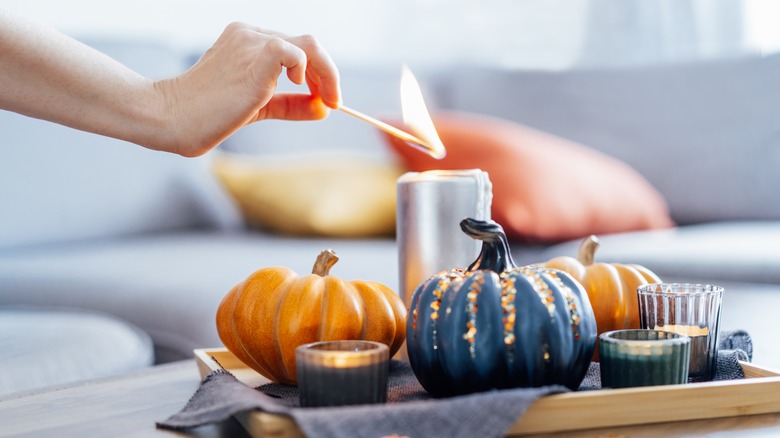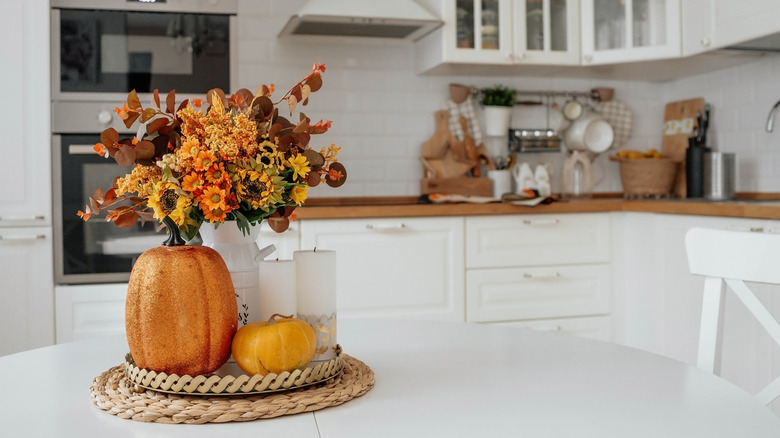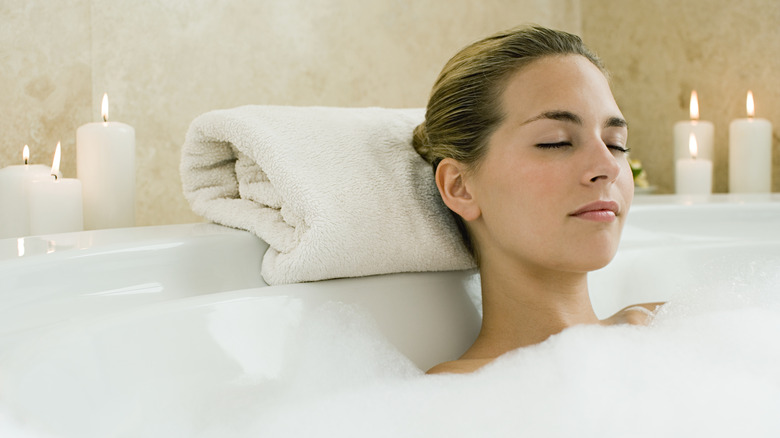Avoid Burning Candles In These Places In Your Home
Burning candles is an easy way to make your home feel cozy and inviting, and scented ones often add a touch of much-needed aromatherapy. Each year, however, fire departments across the United States respond to calls about house fires caused by candles. From 2015 through 2019, in fact, an average of 90 deaths, more than 600 injuries, and at least $291 million in property damage were associated with candle fires, according to the National Fire Safety Protection Association. Whether those candles were left unattended or burned in an unsafe manner, many accidents like this can be avoided.
Does that mean you shouldn't burn candles at all? Absolutely not. Candles can be very relaxing and help to ease odors. But there are four places you'll simply want to be cautious about: bathrooms, bedrooms, laundry rooms and kitchens (although candles can be a hazard anywhere in the home). There are some basic rules to follow, though, and many of the have to do with paying close attention when you're using aerosols and cleaning products along with keeping flammable décor, fabrics, and paper away from lit candles.
Kitchen and laundry room candle safety
Open flames sometimes seem synonymous with kitchens. Stovetop grease flares happen frequently and there are several household items you need to think twice about putting in a microwave to avoid setting things ablaze. However, candles can be a hazard in the kitchen as well. The best rule of thumb to follow is lighting kitchen candles only when you're in the room to keep an eye on them, and after all your cooking or baking prep and clean-up is finished.
While you're cooking and cleaning, all types of flammable substances can enter the air and trigger a disastrous fire. When mixing up batters, powdery ingredients that leave dust in the air like flour and spices can spark a fire. Oils splashed into a candle flame when measuring or cooking fried foods can also be very dangerous. Many types of cleaning sprays and disinfectants used in kitchens contain combustible chemicals, too, so safely stow them before lighting your kitchen candles.
And while laundry rooms might not be the most common area to burn candles, some designer spaces might seem like a good place to light one. All types of products used in laundry rooms — from stain removers to detergent pods — contain elements that can easily cause a fire, so proceed with caution.
Bedroom and bathroom precautions to take when burning candles
Adding the ambiance of candles to a bedroom when you're relaxing after a long day can be soothing. Just make sure that you don't fall asleep while they're burning, and don't use a candle as a nightlight. Keeping a flashlight near the bed, including during power outages, is a better idea.
When it comes to bathrooms, you can light a candle or two while you're soaking in the tub as long as you're mindful of keeping linens (and your hair!) far enough away not to pose a fire hazard. It's best not to burn candles while you're styling your hair or getting dressed, however. Many grooming products used in bathrooms can be highly flammable including aerosol hair products, deodorant sprays, and even nail polish and removers, according to the National Fire Safety Protection Association.
And while it might seem like a good idea to leave candles burning in a bathroom to thwart odors all day, leaving an open flame unattended is never a good idea. No matter where you're lighting a candle, it's best to follow the manufacturer's guidelines for burning time, too. Many suggest not burning them for more than four hours and letting them cool for a couple of hours before relighting to be on the safe side. To be even more mindful of fire safety, think about using battery operated candles in your home instead, especially in rooms like kitchens and baths.


